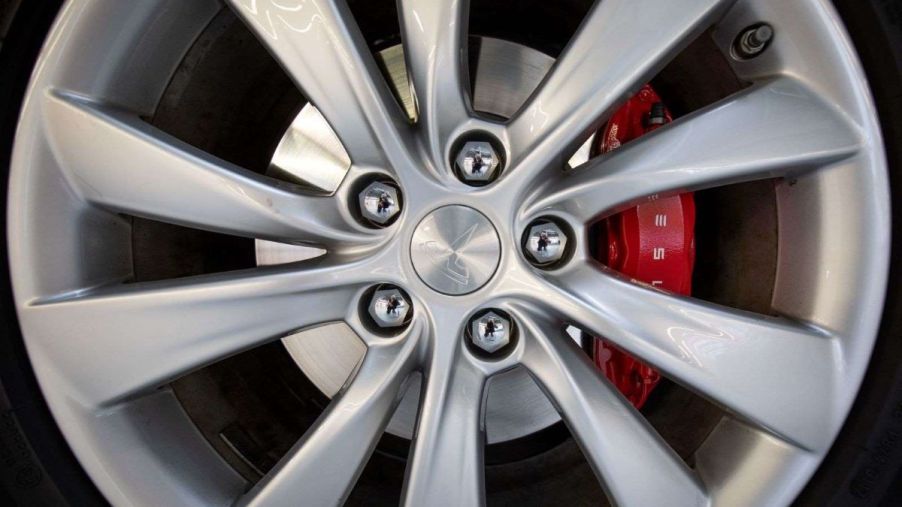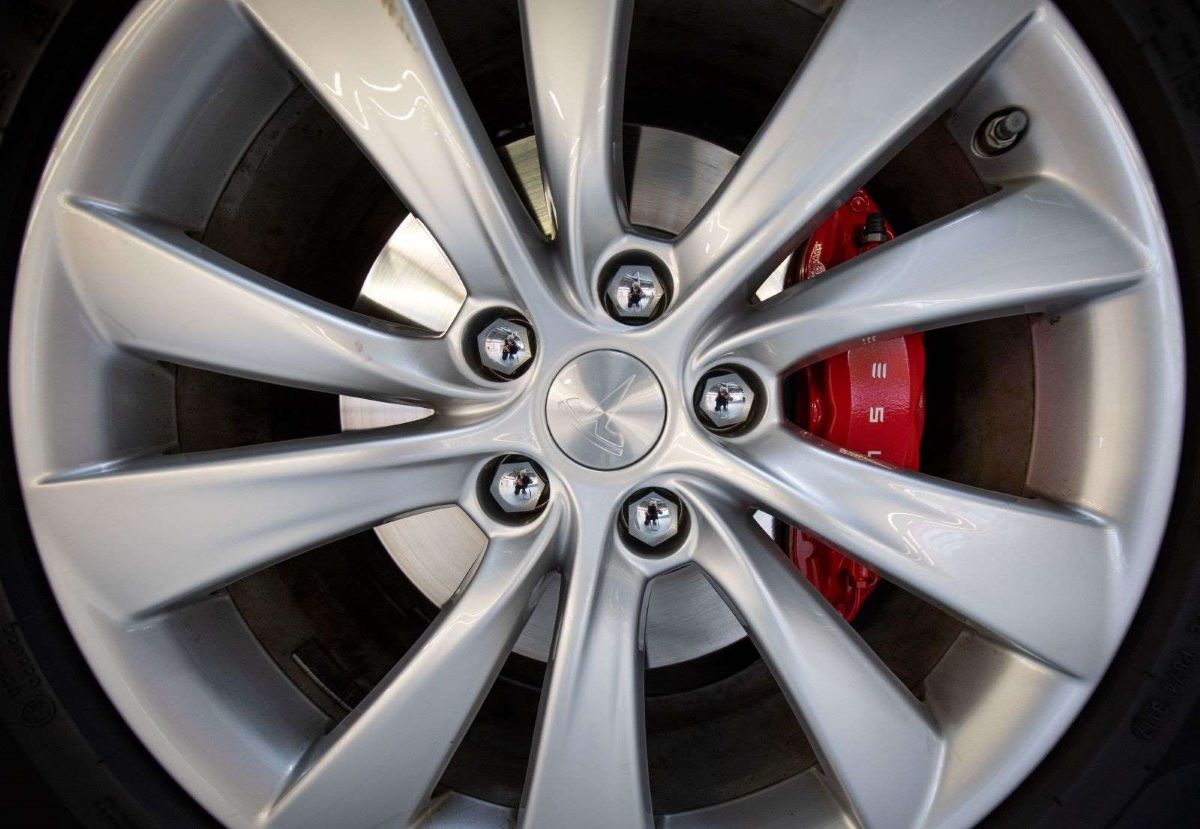
Can EV Brakes Rust From Disuse?
The electric vehicle market vehicle seems to be growing daily. The Tesla Model 3 is the best-selling electric car, and affordable models like the Nissan LEAF and the Kia Niro EV make electrification available to the masses. EVs have a ton of upsides, but there’s one weird issue you might run into with your EVs brakes: rust.
Learn why EV brakes can suffer from rust, how you can prevent it from happening, and how to fix it if you’re already spotting some corrosion.
Regenerative braking means your regular brakes see less use
Electric vehicles, including popular new cars like the Volkswagen ID.4 and Ford Mustang Mach-E, use regenerative braking to limit wear and tear on the brakes while improving range. Regenerative braking uses the car’s motor to slows down the car, and the kinetic energy expended recharges the battery. It’s pretty cool.
In EVs, the traditional brake calipers and discs are typically only used for hard stops or emergency braking. This means that your braking system can last for years beyond systems in internal-combustion engine vehicles or other hybrid cars. It also means you need to be more careful in your maintenance.

Do electric vehicles need their brakes changed?
Believe it or not, brake problems can arise from not using them enough. MotorBiscuit reported on the issue of brake stiction and how to avoid it back in 2020. But, we typically think of brake stiction (when corrosion of brake components leads to the sticking together of system parts) happening when the car isn’t being driven at all.
For EVs, the problem can arise even if the car is being driven daily.
That’s because even though the car may be driven daily, there is a chance that the traditional brakes aren’t used at all because of regenerative braking. In this case, condensating may collect and form rust which never gets scraped away by use.
Do you need specialty brakes for an EV?
Technically, no. The brake pads, rotors, etc. that come with your electric car should be appropriate for your vehicle regardless of your driving style. But just because you don’t need them doesn’t mean you can’t want them.
Back in September, an interview with NRS Brakes CEO Montu Khokar revealed that it may be worth considering specialty brake pads for EVs. He claims that NRS is leading the charge in developing
“The EV revolution and evolution of the entire automotive industry is in full swing and NRS Brakes is positioned as the market leader in EV brake pads. We recognize the future is in EVs, and that EVs have unique needs with respect to braking and brake pads given the dynamics of regenerative braking.”
Montu Khokhar
How to prevent your EV’s brakes from rusting
This is probably the first time you’ll get this advice, but: be a little hard on your brakes. Braking hard may not be the most correct use method, but it can help keep corrosion from messing with your EV’s brakes. Just make sure not to do it too often—this bad habit can ruin your brakes.
This isn’t necessarily a problem with all electric cars. Tesla claims it’s rare for this to happen to their EVs, but some users on EV forums may disagree. It may be more likely to see EV brake rust on more economical models that are less sporty.
Possibly the most important takeaway from all of this is to keep up with scheduled EV brake service and maintenance, particularly providing appropriate lubrication to the braking system.
How to fix rusted EV brakes? The answer might be easier than you think
If you’re past the point of prevention, YouTuber LegitStreetCars provides some tips from his own testing to remove rust from the brake rotors of his Chevy Volt EV.
For extreme rust, you may need to consult your mechanic or local EV dealer.
(Please note that the tips provided in this video are not provided by a manufacturer, so follow them at your own risk. When in doubt, take your electric vehicle with rusted brakes to your mechanic or local EV dealership for assistance.)


